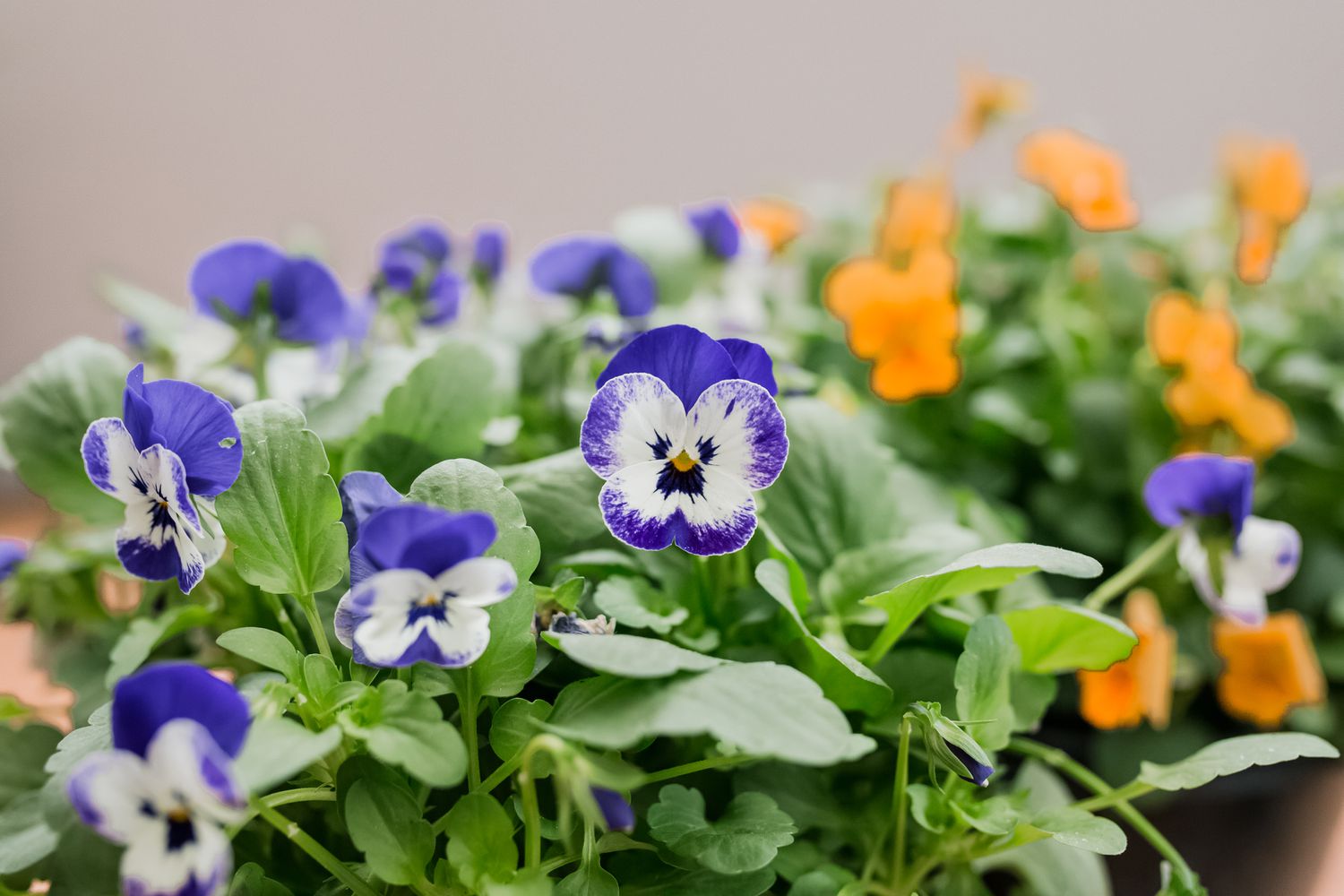
Viola, also known as violet, is a fascinating and diverse genus of flowering plants that belongs to the Violaceae family. With more than 500 species scattered across the globe, violas are admired for their delicate blooms and vibrant colors, which range from purple and blue to yellow and even white. These charming plants have captured the hearts of gardeners and nature enthusiasts alike with their whimsical appearance and enchanting fragrance.
But there is more to violas than meets the eye. Behind their dainty petals lie a multitude of intriguing facts and anecdotes that shed light on their remarkable characteristics and cultural significance. From their historical uses in herbal medicine to their role as symbols of love and loyalty, these petite flowers have left an indelible mark on various civilizations throughout history. So, buckle up and get ready to dive into the enchanting world of violas – here are 15 intriguing facts that will make you appreciate these delightful blooms even more.
Key Takeaways:
- Viola, a Versatile Genus
Viola is not just one flower, but a diverse genus with over 500 species, including pansies and violets. Its adaptability allows it to thrive in various climates and habitats, adding vibrant colors to gardens and floral arrangements. - Symbol of Love and Loyalty
In Victorian times, exchanging Violas conveyed sentiments of affection and everlasting loyalty. Violas have long been associated with love and faithfulness, making them a charming and meaningful gift for loved ones.
Viola, a Versatile Genus
The Viola genus is incredibly diverse, comprising over 500 different species, including the well-known pansies and violets. Its adaptability allows it to thrive in various climates and habitats.
Colors Galore
Violas come in a vast array of colors, ranging from vibrant purples, blues, and yellows to soft pinks, whites, and even black. The rainbow of hues adds a burst of color to any garden or arrangement.
Symbol of Love and Loyalty
Violas have long been associated with love and faithfulness. In Victorian times, exchanging Violas with a loved one conveyed sentiments of affection and everlasting loyalty.
Edible Delights
Some Viola species, such as the Viola odorata or sweet violet, are not only visually appealing but also edible! Their flowers and leaves can be used in culinary creations, adding a delicate floral flavor.
Medicinal Properties
The Viola tricolor or heartsease has been used in traditional medicine for centuries. It is believed to possess anti-inflammatory, diuretic, and expectorant properties, making it a popular choice for herbal remedies.
Name Origins
The name “Viola” is derived from the Latin word for “violet.” It is believed to have originated from the Greek myth of Io, who was turned into a heifer and ate violets as food.
Hardy Perennials
Many Viola species are hardy perennials, meaning they can survive through various seasons and bloom year after year, adding beauty and charm to gardens and landscapes.
Adaptable Growers
Violas are relatively easy to grow and adapt to different conditions. They can thrive in both sun and partial shade, making them versatile options for gardeners.
Sentinels of Spring
Violas are often among the first flowers to bloom in the spring, boldly announcing the arrival of the season. Their presence brings hope and renewal after the cold winter months.
Pollinator Attraction
The vibrant colors and fragrant scent of Viola flowers attract pollinators like bees and butterflies, playing a vital role in supporting the ecosystem and promoting biodiversity.
Musical Inspiration
Violas not only inspire botanists and garden enthusiasts, but also musicians. The viola, a string instrument slightly larger than a violin, derives its name from the flower due to its similar shape and color.
Cultural Significance
Violas hold cultural significance in different regions around the world. In Japan, the Viola mandshurica is recognized as the national flower, symbolizing purity and innocence.
Downy Delicacy
The leaves of Viola species often have a soft, downy texture, adding to their appeal. This delicate touch invites people to gently run their fingers across the foliage, experiencing its velvety feel.
Unique Flower Structure
Violas possess a distinct flower structure, consisting of five petals. The lower petal, also known as the “landing pad,” features intricate markings that guide pollinators towards the nectar-rich center.
Cultural Namesake
Violas have inspired namesakes beyond the botanical realm. The name “Viola” is commonly given to individuals, symbolizing their beauty, elegance, and grace.
These 15 intriguing facts about Viola only scratch the surface of this remarkable flower’s allure. From its vibrant colors and medicinal properties to its cultural significance and musical connections, Viola continues to enchant and fascinate people around the world. Whether adorning a garden or brightening up a bouquet, Viola serves as a testament to the beauty and wonders of the natural world.
Conclusion
Violas are fascinating and beautiful plants that have a long and rich history. From their striking blossoms to their versatile uses in gardens and landscapes, there is much to admire about these lovely flowers. Whether you are a gardening enthusiast or simply appreciate the beauty of nature, incorporating violas into your surroundings can bring joy and color to your life.
With their vibrant hues, delicate petals, and sweet fragrance, violas are sure to captivate and enchant anyone who encounters them. So why not consider adding these intriguing flowers to your garden or indoor space? Their hardiness, ease of care, and multitude of varieties make them an excellent choice for both beginners and experienced gardeners alike.
Next time you come across a viola, take a moment to appreciate its unique characteristics and the role it plays in our natural world. These small but mighty plants have a charm all their own and continue to bring beauty and joy to gardens around the world.
FAQs
1. Are violas the same as pansies?
While violas and pansies belong to the same family (Violaceae) and share some similarities, they are different plants. Violas typically have smaller flowers and are more cold-hardy compared to pansies.
2. Can violas be grown indoors?
Absolutely! Violas can be grown indoors as long as they receive adequate sunlight and are planted in well-draining soil. They can brighten up any space with their vibrant colors and delicate blooms.
3. How often should violas be watered?
Violas prefer evenly moist soil, so it’s important to water them regularly. Check the soil moisture before watering and adjust accordingly, making sure not to overwater as it can lead to root rot.
4. Can violas tolerate cold temperatures?
Yes, violas are known for their cold tolerance and can withstand frost and light freezes. However, extreme cold temperatures may cause damage to the plants.
5. Do violas attract pollinators?
Yes, violas are known to attract pollinators such as bees and butterflies with their nectar-rich flowers.
Was this page helpful?
Our commitment to delivering trustworthy and engaging content is at the heart of what we do. Each fact on our site is contributed by real users like you, bringing a wealth of diverse insights and information. To ensure the highest standards of accuracy and reliability, our dedicated editors meticulously review each submission. This process guarantees that the facts we share are not only fascinating but also credible. Trust in our commitment to quality and authenticity as you explore and learn with us.


